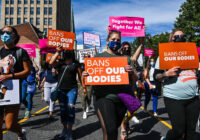Meena (name changed), a 26-year-old woman from Pune, India, has been receiving assistance from the Family Planning Association. One day, she rushed to the clinic in tears, desperately hoping for some help. Meena continued to cry as the counselor screened her for signs of domestic violence.
She belongs to a middle-class family. Her husband works at a private firm and they have a 3-year-old son. Meena is an orphan and does not have any other relatives. Her husband had been harassing her. He was not willing to use a condom and prevented her from using any contraceptive. Meena had already undergone abortion around three or four times and was pregnant yet again.
One day, while she was cooking in the kitchen, Meena and her husband had an argument. Angered by this, her husband kicked her and she landed on her back. As a result of the impact, she started bleeding.
Crimes Against Women
Meena is just one of many reported and unreported cases of women who experience domestic violence daily. Her fight for justice is yet another reminder that violence against women, one of the most inexorable human rights violations in the world, continues to lurk around in all corners of our personal and professional lives.
One in three women will experience physical and/or sexual violence by a partner or sexual violence by a non-partner. South and East Asia have the highest rate of intimate partner violence standing at 37.7%. According to UNICEF, women aged 15 to 44 are more likely to be maimed or die from male-inflicted violence than from cancer, malaria, traffic accidents and war combined.
These numbers are alarming. This femicide and the increasing number of crimes against women call for the declaration of a crisis. Yet, ironically, our progress is so slow that as per the World Economic Forum’s Global Gender Gap Report 2016, it may take us around 170 years to close the gender equity divide.
With the current pace of intervention, the violence promoted through traditional practices such as child marriage will likely continue for at least 100 years. It was in 1848 when the first women’s rights convention was held to discuss the social, civil and religious condition of women. Yet 171 years have passed and the 16 days of activism — an annual, international campaign to raise awareness about gender-based violence — is an ugly reminder of failed promises and the inability of governments to protect women.
To put this in context, over the same period, two World Wars took place, humankind reached the moon, telephones replaced cellphones and the internet became an integral part of our day-to-day life. What didn’t change is the invasion of state policies to recognize issues around bodily integrity as a personal and private matter.
Instead of regressive issues around women’s sexual rights, access to comprehensive sexuality education, and safe and legal abortion, the system should focus its attention on any attack on women’s honor. This includes standing against rape, enforced prostitution or any form of indecent assault, as well as letting girls and women make their own decision about what to do with their body, life and future.
Whether it was 10-year-old Zainab from Pakistan, a 5-year-old girl from Bhutan or a 27-year-old doctor from India, they all had one thing in common: They were brutally raped and killed, not for what they wore, how they behaved or for attracting attention, but for simply being female.
The 2019 Women, Peace and Security Index ranks 167 countries on women’s equality. This year’s report reveals trends in women’s wellbeing across 11 indicators that include intimate partner violence, community safety perception and organized violence. Norway came first, followed by Switzerland and Denmark, yet all South Asian countries, except Nepal (84), failed to appear in the top 100. The low ranking of Sri Lanka (107), the Maldives (111), Bhutan (118), India (133), Bangladesh (142), Pakistan (164) and Afghanistan (166) clearly indicates the consistent failure of existing mechanisms to address the threat of violence against women.
Political Violence
Despite the poor state of women’s security in both public and private spaces, another threat that is looming over the movement to protect them is political violence. According to the International Planned Parenthood Federation (IPFF), the “Global Gag Rule (GGR), or Mexico City Policy, denies US funding to organisations like IPPF if they use non-US funds to provide abortion services, counselling or referrals,” even if abortion is legal in a country. It also affects the UN Population Fund and Marie Stopes International, and “blocks critical funding for services like contraception, maternal health, and HIV prevention and treatment.” The use of economic and trade mechanisms to restrict services should not be tolerated.
It is important to mention that the Convention on the Elimination of all Forms of Discrimination Against Women (CEDAW) is an international treaty adopted in 1979 by the UN General Assembly. While the treaty calls for the criminalization of all forms of gender-based violence against women, it is worth noting that unsafe and criminalized abortion is one form of such violence.
The lack of political sympathy for the 2018 women’s march in Pakistan or the green movement on the streets of Argentina to demand the legalization of abortion is a reflection of the never-ending struggle in the fight against justice and funding systems controlled by men and for men. Just 16 days of activism are not enough to make a change. We are dealing with an emergency of violence against women that cannot be resolved by a justice system that’s not fast enough, institutions that are not agile enough and a movement that’s not funded enough.
The views expressed in this article are the author’s own and do not necessarily reflect Fair Observer’s editorial policy.
Support Fair Observer
We rely on your support for our independence, diversity and quality.
For more than 10 years, Fair Observer has been free, fair and independent. No billionaire owns us, no advertisers control us. We are a reader-supported nonprofit. Unlike many other publications, we keep our content free for readers regardless of where they live or whether they can afford to pay. We have no paywalls and no ads.
In the post-truth era of fake news, echo chambers and filter bubbles, we publish a plurality of perspectives from around the world. Anyone can publish with us, but everyone goes through a rigorous editorial process. So, you get fact-checked, well-reasoned content instead of noise.
We publish 2,500+ voices from 90+ countries. We also conduct education and training programs
on subjects ranging from digital media and journalism to writing and critical thinking. This
doesn’t come cheap. Servers, editors, trainers and web developers cost
money.
Please consider supporting us on a regular basis as a recurring donor or a
sustaining member.
Will you support FO’s journalism?
We rely on your support for our independence, diversity and quality.






